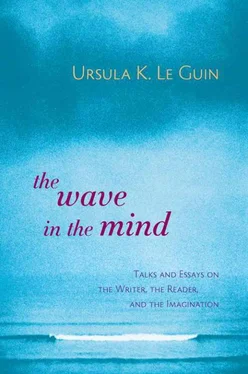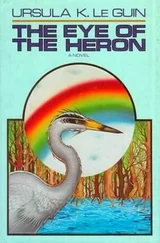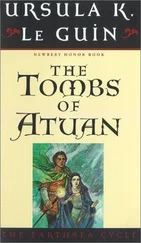RHYTHMIC PATTERN IN THE LORD OF THE RINGS
This piece, growing out of my attempts to study and consider the rhythms of prose and written for my own amusement, happily found a home in Karen Haber’s anthology of writing on Tolkien , Meditations on Middle Earth, published in 2001. I have added a brief note about the film version of the first book of the Trilogy, released late in the same year.
Since I had three children, I’ve read Tolkien’s Trilogy aloud three times. It’s a wonderful book to read aloud or (consensus by the children) listen to. Even when the sentences are long, their flow is perfectly clear, and follows the breath; punctuation comes just where you need to pause; the cadences are graceful and inevitable. Like Dickens and Virginia Woolf, Tolkien must have heard what he wrote. The narrative prose of such novelists is like poetry in that it wants the living voice to speak it, to find its full beauty and power, its subtle music, its rhythmic vitality.
Woolf’s vigorous, highly characteristic sentence rhythms are surely and exclusively prose: I don’t think she ever uses a regular beat. Dickens and Tolkien both occasionally drop into metrics. Dickens’s prose in moments of high emotional intensity tends to become iambic, and can even be scanned: “It is a far, far better thing that I do/than I have ever done.” The hoity-toity may sneer, but this iambic beat is tremendously effective—particularly when the metric regularity goes unnoticed as such. If Dickens recognised it, it didn’t bother him. Like most really great artists, he’d use any trick that worked.
Woolf and Dickens wrote no poetry. Tolkien wrote a great deal, mostly narratives and “lays,” often in forms taken from the subjects of his scholarly interest. His verse often shows extraordinary intricacy of meter, alliteration, and rhyme, yet is easy and fluent, sometimes excessively so. His prose narratives are frequently interspersed with poems, and once at least in the Trilogy he quietly slips from prose into verse without signalling it typographically. Tom Bombadil, in The Fellowship of the Ring , speaks metrically. His name is a drumbeat, and his meter is made up of free, galloping dactyls and trochees, with tremendous forward impetus: Tum tata Tum tata, Tum ta Tum ta…. “You let them out again, Old Man Willow! What be you a-thinking of? You should not be waking. Eat earth! Dig deep! Drink water! Go to sleep! Bombadil is talking!” Usually Tom’s speech is printed without line breaks, so unwary or careless silent readers may miss the beat until they see it as verse—as song, actually, for when his speech is printed as verse Tom is singing.
As Tom is a cheerfully archetypal fellow, profoundly in touch with, indeed representing the great, natural rhythms of day and night, season, growth and death, it’s appropriate that he should talk in rhythm, that his speech should sing itself. And, rather charmingly, it’s an infectious beat; it echoes in Goldberry’s speech, and Frodo picks it up. “Goldberry!” he cries as they are leaving. “My fair lady, clad all in silver green! We have never said farewell to her, nor seen her since that evening!”
If there are other metric passages in the Trilogy, I’ve missed them. The speech of the elves and noble folk such as Aragorn has a dignified, often stately gait, but not a regular stress-beat. I suspected King Théoden of iambics, but he only drops into them occasionally, as all measured English speech does. The narrative moves in balanced cadences in passages of epic action, with a majestic sweep reminiscent of epic poetry, but it remains pure prose. Tolkien’s ear was too good and too highly trained in prosody to let him drop into meter unknowingly.
Stress-units—metric feet—are the smallest elements of rhythm in literature, and in prose probably the only quantifiable ones. A while ago I got interested in the ratio of stresses to syllables in prose, and did some counting.
In poetry, by and large, one syllable out of every two or three has a beat on it: Tum ta Tum ta ta Tum Tum ta, and so on…. In narrative prose, that ratio goes down to one beat in two to four: ta Tum tatty Tum ta Tum tatatty, and so on…. In discursive and technical writing the ratio of unstressed syllables goes higher; textbook prose tends to hobble along clogged by a superfluity of egregiously unnecessary and understressed polysyllables.
Tolkien’s prose runs to the normal narrative ratio of one stress every two to four syllables. In passages of intense action and feeling the ratio may get pretty close to 50 percent, like poetry, but still, except for Tom, it is irregular, it can’t be scanned.
Stress-beat in prose is fairly easy to identify and count, though I doubt any two readers of a prose passage would mark the stresses in exactly the same places. Other elements of rhythm in narrative are less physical and far more difficult to quantify, having to do not with an audible repetition, but with the pattern of the narrative itself. These elements are longer, larger, and very much more elusive.
Rhythm is repetition. Poetry can repeat anything—a stress-pattern, a phoneme, a rhyme, a word, a line, a stanza. Its formality gives it endless liberty to establish rhythmic structure.
What is repeatable in narrative prose? In oral narrative, which generally maintains many formal elements, rhythmic structure may be established by the repetition of certain key words, and by grouping events into similar, accumulative semirepetitions: think of “The Three Bears” or “The Three Little Pigs.” European story uses triads; Native American story is more likely to do things in fours. Each repetition both builds the foundation of the climactic event, and advances the story.
Story moves, and normally it moves forward. Silent reading doesn’t need repetitive cues to keep the teller and the hearers oriented, and people can read much faster than they speak. So people accustomed to silent reading generally expect narrative to move along pretty steadily, without formalities and repetitions. Increasingly, during the past century, readers have been encouraged to look at a story as a road we’re driving, well paved and graded and without detours, on which we go as fast as we possibly can, with no changes of pace and certainly no stops, till we get to—well—to the end, and stop.
“There and Back Again”: in Bilbo’s title for The Hobbit , Tolkien has already told us the larger shape of his narrative, the direction of his road.
The rhythm that shapes and directs his narrative is noticeable, was noticeable to me, because it is very strong and very simple, as simple as a rhythm can be: two beats. Stress, release. Inbreath, outbreath. A heartbeat. A walking gait—but on so vast a scale, so capable of endlessly complex and subtle variation, that it carries the whole enormous narrative straight through from beginning to end, from There to Back Again, without faltering. The fact is, we walk from the Shire to the Mountain of Doom with Frodo and Sam. One, two, left, right, on foot, all the way. And back.
What are the elements that establish this long-distance walking pace? What elements recur, are repeated with variations, to form the rhythms of prose? Those that I am aware of are: Words and phrases. Images. Actions. Moods. Themes.
Words and phrases, repeated, are easy to identify. But Tolkien is not, after all, telling his story aloud; writing prose for silent, and sophisticated, readers, he doesn’t use key words and stock phrases as storytellers do. Such repetitions would be tedious and faux-naive. I have not located any “refrains” in the Trilogy.
As for imagery, actions, moods, and themes, I find myself unable to separate them usefully. In a profoundly conceived, craftily written novel such as The Lord of the Rings , all these elements work together indissolubly, simultaneously. When I tried to analyse them out I just unraveled the tapestry and was left with a lot of threads, but no picture. So I settled for bunching them all together. I noted every repetition of any image, action, mood, or theme without trying to identify it as anything other than a repetition.
Читать дальше



